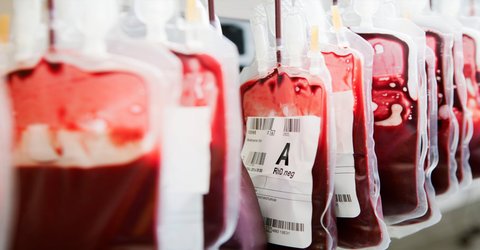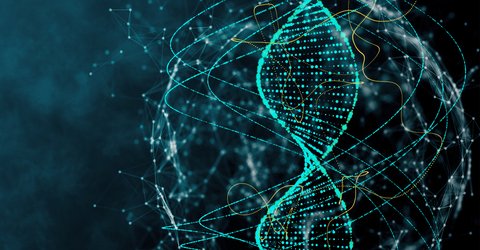What is a genome?
A genome is an organism's complete set of DNA, including all of its genes. Each genome contains all of the information needed to build and maintain that organism. In humans, a copy of the entire genome - more than 3 billion DNA base pairs - is contained in all cells that have a nucleus.
In the fields of molecular biology and genetics, a genome is the genetic material of an organism. It consists of DNA. The genome includes both the genes and the noncoding DNA, as well as mitochondrial DNA and chloroplast DNA. The study of the genome is called genomics.
Is genome the same as DNA?
DNA is the molecule that is the hereditary material in all living cells. Genes are made of DNA, and so is the genome itself. A gene consists of enough DNA to code for one protein, and a genome is simply the sum total of an organism's DNA.
What is an example of a genome?
Genome is defined as all of a somatic cell's genetic information, or a set of haploid chromosomes. An example of a genome is what determines the physical characteristics of a person.
What is a genome made of?
In most living things, the genome is made of a chemical called DNA. The genome contains genes, which are packaged in chromosomes and affect specific characteristics of the organism.
Why is the genome important? What was the Human Genome Project and why has it been important?
The work of the Human Genome Project has allowed researchers to begin to understand the blueprint for building a person. As researchers learn more about the functions of genes and proteins, this knowledge will have a major impact in the fields of medicine, biotechnology, and the life sciences.
Can two people have the same DNA?
Of course, a lot of the gene pairs in your genome are actually the same, so it wouldn't matter which copy you used, but the odds of constructing an exact duplicate genome by chance are still vanishingly small. And even identical twins don't necessarily have identical DNA.
Does every cell contain the entire genome?
Since every cell contains the exact same DNA and genome, it is therefore the levels of gene expression that determine whether a cell will be a neuron, skin, or even an immune cell.
How many types of genome are there?
Since the mutation is A - G, there are three genome types exist - namely, AA, AG, and GG.
How many genomes do humans have?
There are an estimated 20,000-25,000 human protein-coding genes. The estimate of the number of human genes has been repeatedly revised down from initial predictions of 100,000 or more as genome sequence quality and gene finding methods have improved, and could continue to drop further.
What is difference between genome and gene?
A gene consists of enough DNA to code for one protein, and a genome is simply the sum total of an organism's DNA. DNA is long and skinny, capable of contorting like a circus performer when it winds into chromosomes.
Do all humans have the same genome?
The human genome is mostly the same in all people. But there are variations across the genome. This genetic variation accounts for about 0.001 percent of each person's DNA and contributes to differences in appearance and health. People who are closely related have more similar DNA.
What is the largest genome?
A rare Japanese flower named Paris japonica sports an astonishing 149 billion base pairs, making it 50 times the size of a human genome - and the largest genome ever found. Until now, the biggest genome belonged to the marbled lungfish, whose 130 billion base pairs weighed in at an impressive 132.83 picograms.
Where is the genome found?
Researchers refer to DNA found in the cell's nucleus as nuclear DNA. An organism's complete set of nuclear DNA is called its genome. Besides the DNA located in the nucleus, humans and other complex organisms also have a small amount of DNA in cell structures known as mitochondria.
How much does it cost to get your genome sequenced?
23andMe competitor Veritas Genetics slashes price of whole genome sequencing 40% to $600. Veritas is lowering the cost of a full genome sequence from $999 to $599 and believes within two years it will be pricing in the $100–$200 range.
Do identical twins have 100% the same DNA?
It is true that identical twins share their DNA code with each other. This is because identical twins were formed from the exact same sperm and egg from their father and mother. ... While this rarely happens, it makes it so that one identical twin may have a genetic condition, while the other twin does not.
Do identical twins have same fingerprints?
They come from the same fertilized egg and share the same genetic blueprint. To a standard DNA test, they are indistinguishable. But any forensics expert will tell you that there is at least one surefire way to tell them apart: identical twins do not have matching fingerprints.
Do conjoined twins have the same DNA?
And of course twins can be conjoined. But these twins are identical which means by definition they have the same mom and dad. In fact, they have the same DNA! ... The end result is not two separate, connected people but one person with a mix of both twins.
Does the human body change every 7 years?
Every seven years or 10 years we become essentially new people, because in that time, every cell in your body has been replaced by a new cell.
Do humans all have the same genes?
The Human Genome Project estimated that humans have between 20,000 and 25,000 genes. Every person has two copies of each gene, one inherited from each parent. Most genes are the same in all people, but a small number of genes (less than 1 percent of the total) are slightly different between people.
How much DNA is in a human cell?
Most cells in our body have two copies of the genome with 6 billion base pairs of DNA. Germ cells only have one copy of the genome made up of 3 billion base pairs of DNA. When sperm and egg cells combine, that results in two genomes. Some cells like skin, hair, and nail cells don't have any genomes.
How many proteins do humans have?
In humans, up to ten different proteins can be traced to a single gene. Proteome: It is now estimated that the human body contains between 80,000 and 400,000 proteins.
What does the human genome look like?
Genomes are made of DNA, an extremely large molecule that looks like a long, twisted ladder. ... DNA is read like a code. This code is made up of four types of chemical building blocks, adenine, thymine, cytosine, and guanine, abbreviated with the letters A, T, C, and G.
Is there DNA in urine?
Any body tissue that has not been degraded is a potential source of DNA. ... Urine itself does not contain DNA, but it may contain epithelial cells, which do contain DNA. Most healthy individuals, however, do not excrete epithelial cells in their urine.
What percentage of human genome code is protein?
For years, we've known that only 1.5 percent of the genome actually contains instructions for making proteins, the molecular workhorses of our cells. But ENCODE has shown that the rest of the genome - the non-coding majority - is still rife with ''functional elements''.
How do we identify genes?
The computer looks for common sequences known to be found at the start and end of genes such as promoter sequences (where proteins ?bind that switch on genes), start codons ?(where the code for the gene product, RNA ?or protein, starts) and stop codons (where the code for the gene product ends).
What are 4 base pairs of DNA?
Attached to each sugar is one of four bases--adenine (A), cytosine (C), guanine (G), or thymine (T). The two strands are held together by hydrogen bonds between the bases, with adenine forming a base pair with thymine, and cytosine forming a base pair with guanine.
What does DNA look like to the human eye?
A. Deoxyribonucleic acid extracted from cells has been variously described as looking like strands of mucus; limp, thin, white noodles; or a network of delicate, limp fibers. Under a microscope, the familiar double-helix molecule of DNA can be seen.
Is a chromosome a genome?
A chromosome is a package containing a chunk of a genome—that is, it contains some of an organism's genes. The important word here is "package": chromosomes help a cell to keep a large amount of genetic information neat, organized, and compact. Chromosomes are made of DNA and protein.
Is a chromosome bigger than DNA?
To store this important material, DNA molecules are tightly packed around proteins called histones to make structures called chromosomes. ... The largest chromosome, chromosome 1, contains about 8000 genes. The smallest chromosome, chromosome 21, contains about 300 genes.
What was the original aim of the Human Genome Project?
The main goals of the Human Genome Project were to provide a complete and accurate sequence of the 3 billion DNA base pairs that make up the human genome and to find all of the estimated 20,000 to 25,000 human genes.
What is the human exome?
The “exome” consists of all the genome's exons, which are the coding portions of genes. ... The human genome consists of 3 billion nucleotides or ''letters'' of DNA. But only a small percentage - 1.5 percent - of those letters are actually translated into proteins, the functional players in the body.
Which animal DNA is closest to humans?
chimpanzees
"This will allow us to look for the genetic basis of what makes modern humans different from both bonobos and chimpanzees." Ever since researchers sequenced the chimp genome in 2005, they have known that humans share about 99% of our DNA with chimpanzees, making them our closest living relatives.
Editing, Writing & Research : Perwez Anwer
Director and Editor-in-Chief, IBTN Education Network Group, New Delhi







